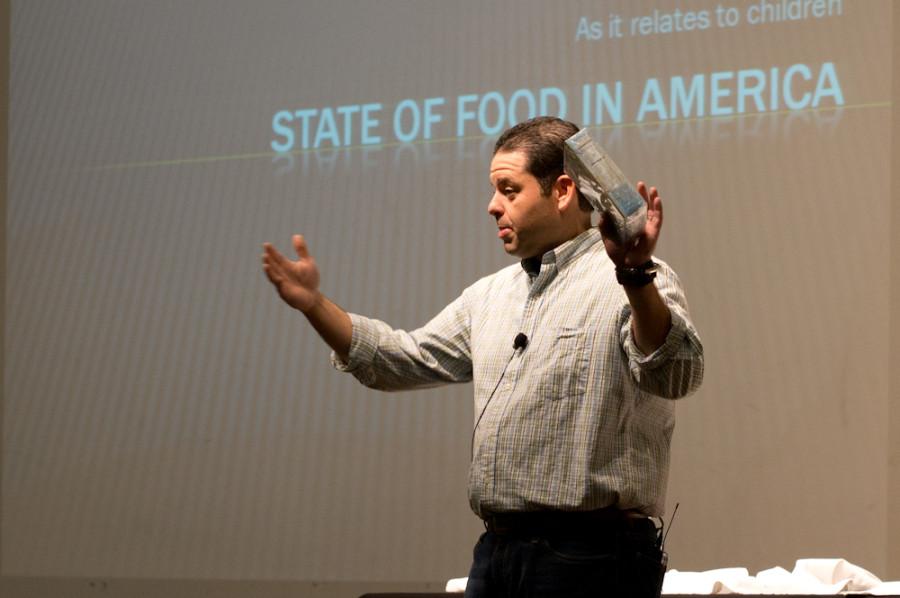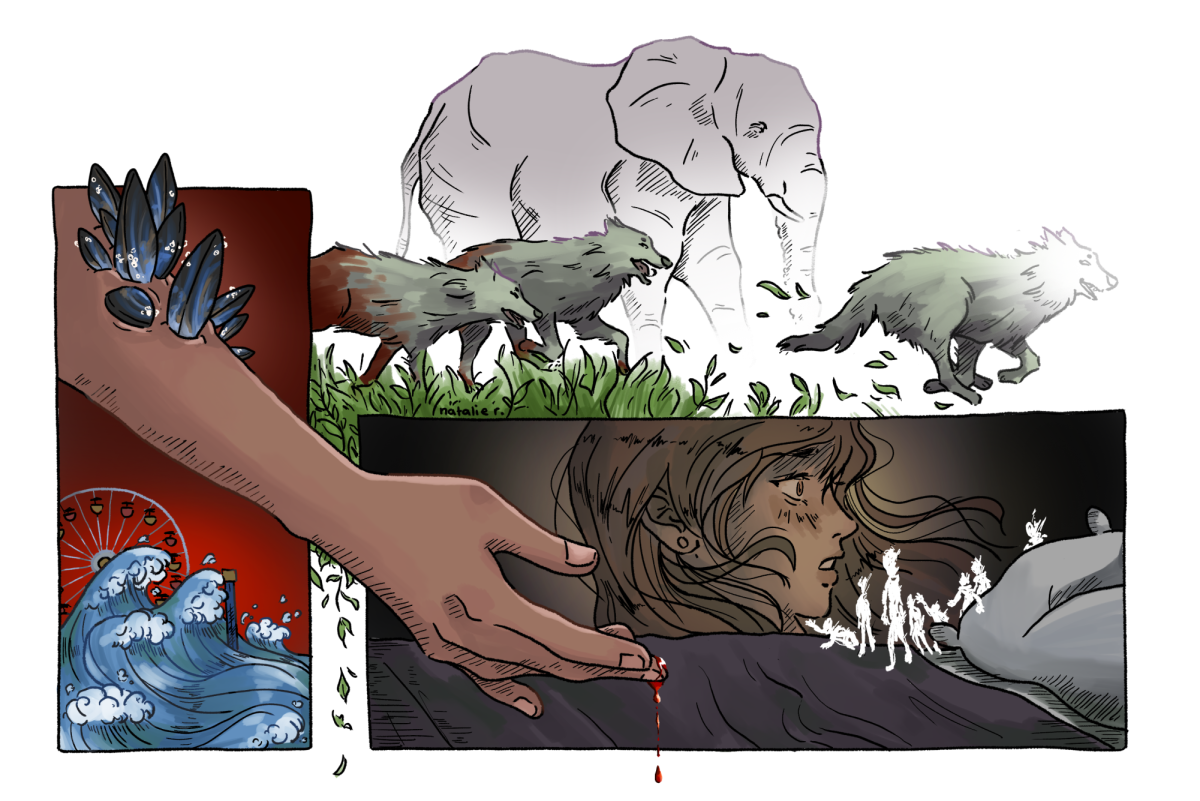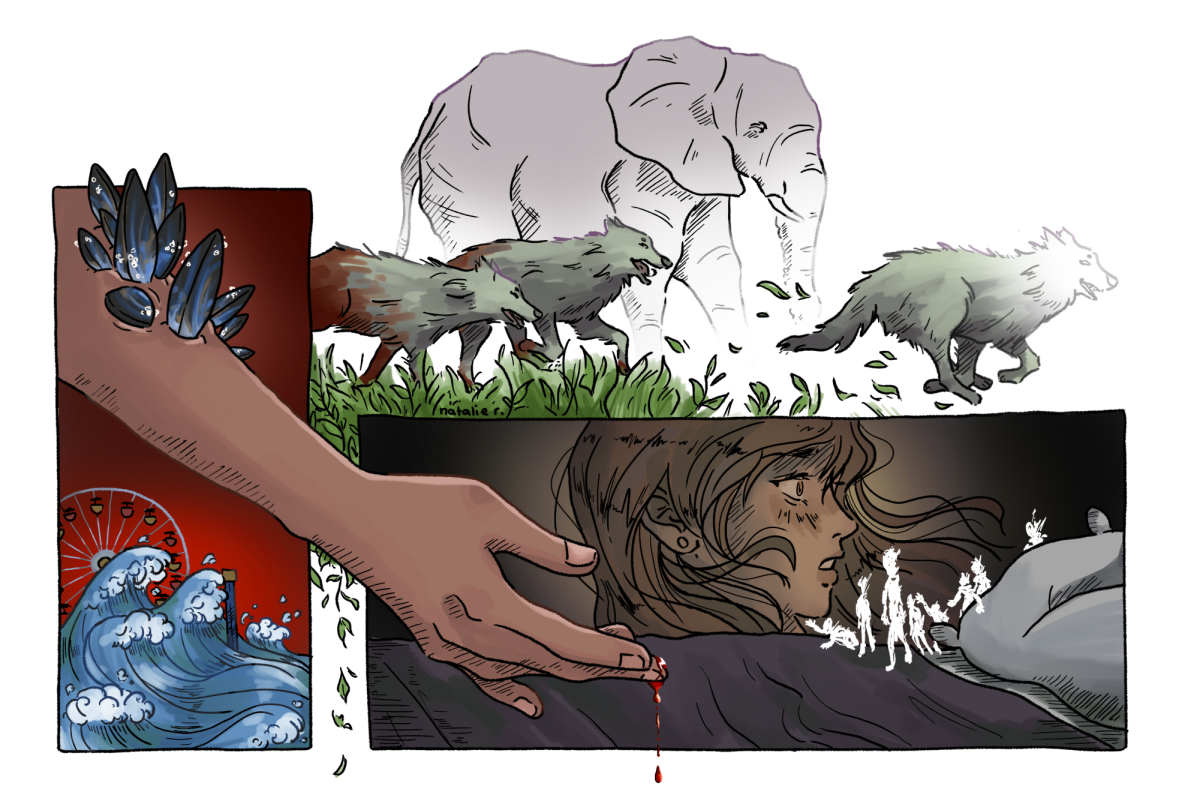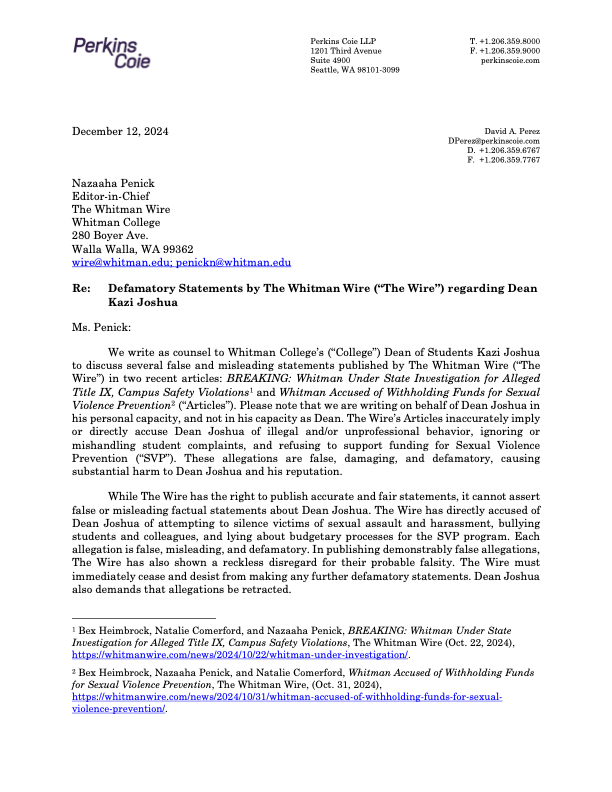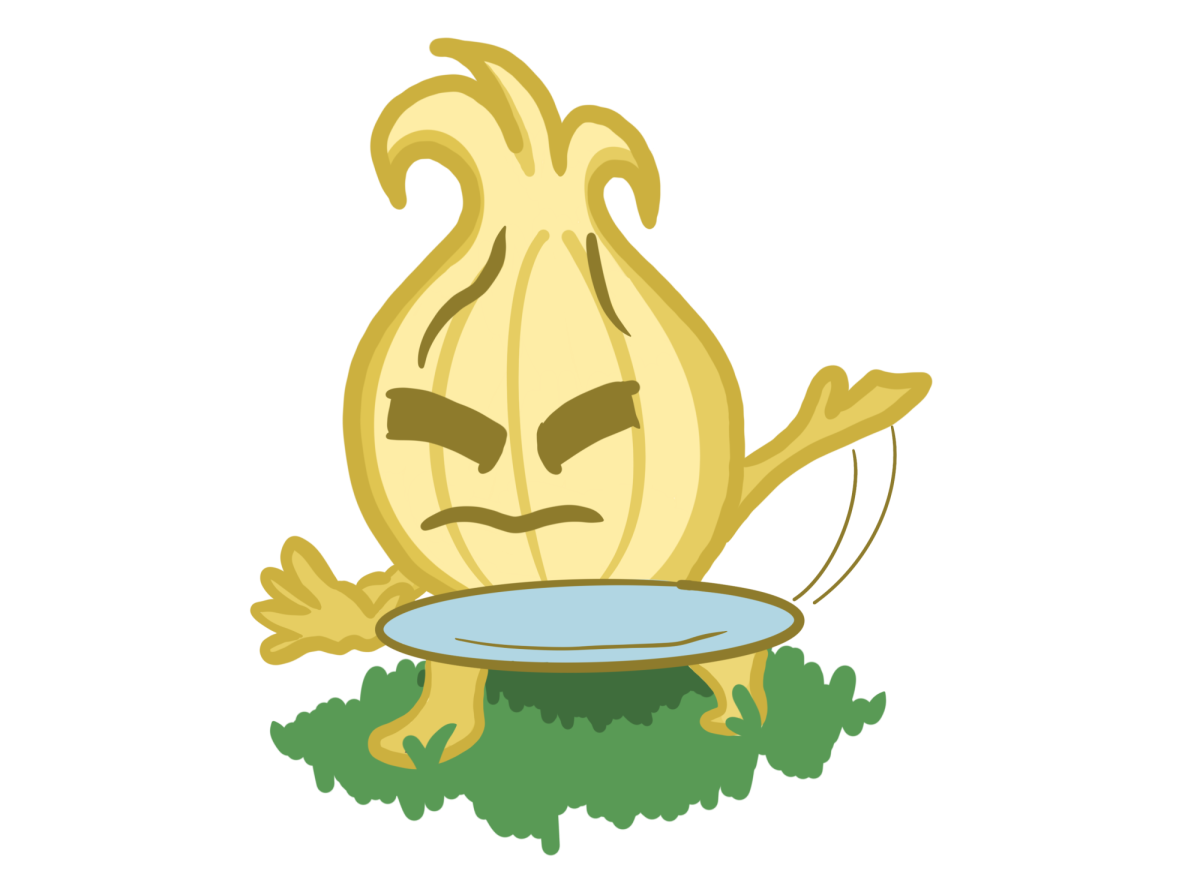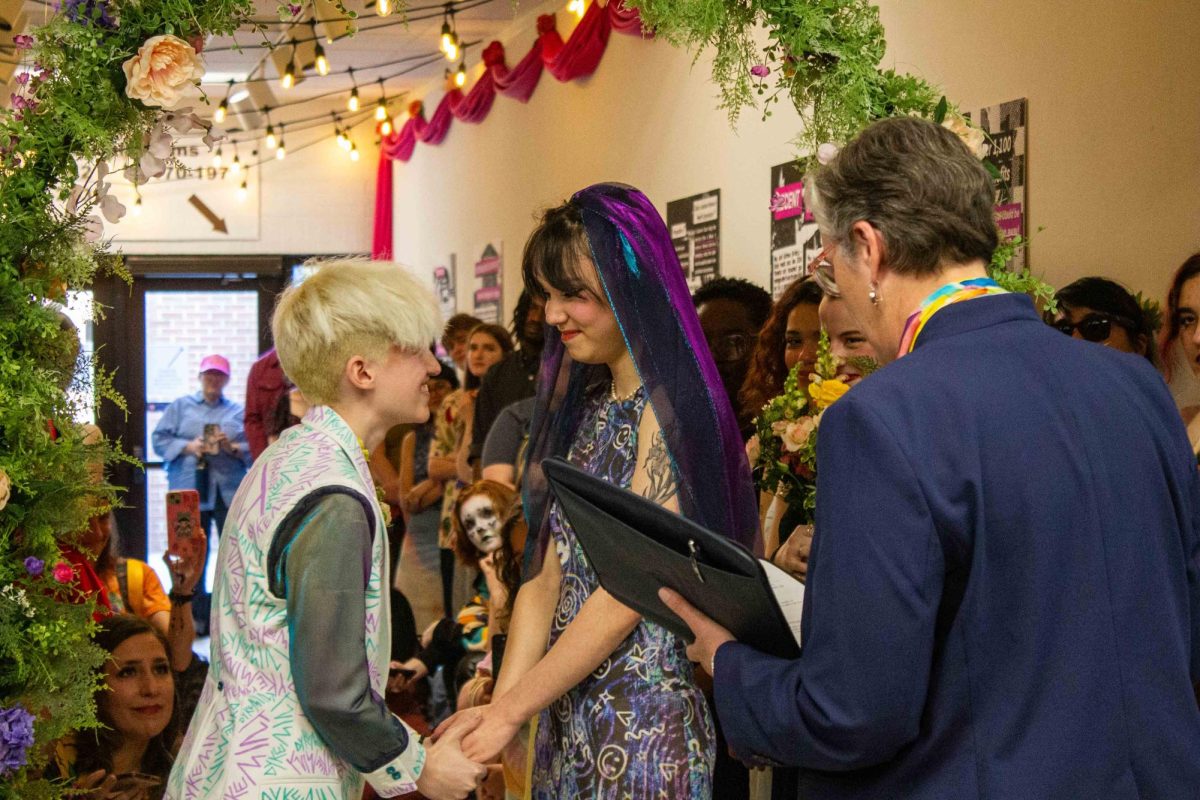The “State of Food in America” was addressed Wednesday, Nov. 9, as alumna Chantal ‘98 and Shane Valentine visited campus to speak about their baby cuisine cookbook and the problem with food in the United States today.
The visit included an evening lecture, several meetings with student leaders and food groups on campus and an entrepreneur luncheon with students.
“The visit was really addressing a large priority of the college and the Student Engagement Center to provide more relevant resources for current students to understand the liberal arts education at Whitman,” said Noah Leavitt, assistant dean for student engagement. “[We want to let students] see alumni who have been through the Whitman experience and have gone on to do something really extraordinarily interesting and successful.”
The Pioneer had the opportunity to speak with the Valentines before their lecture and hear more about their book and what they think Whitman can do within the larger food system.
Pio: What’s the background on the baby cookbook?
Chantal: We had a baby, and we decided, of course, we were going to make food for her. We thought we had to make her something special and separate. Shane has a culinary background. He decided not to do it as a career, but he went to school and he knows how to cook very well. He was really scared of how to feed her. We realized there were not a lot of resources out there and that parents didn’t have a clue about how to feed their kids and they were scared to do it just like us. I was working for an international nonprofit at the time and so we called my friends around the world and said, ‘What do you guys feed your kids?’ In Japan, India, Thailand––everywhere. They thought it was the weirdest question. They were like, ‘They eat what we eat. What do you mean?’ That was just a huge eye-opener for us. So we went back to Alina’s pediatrician and asked her, ‘Can we feed her real food?’ I mean, it sounds like the craziest question, but it’s a question that is not very well known here in America. So we just sort of set out on a quest to teach parents how to do it and created the cookbook. The book was born to inspire parents. It was based on international, flavorful recipes because we feel that the more flavors and real food that you can introduce to your baby, you’re setting them up to love all types of food for their whole life. And you shouldn’t feed your kids something separate; everyone should eat the same thing together.
Shane: It creates a culture of food in the house where baby sees mom and dad eating the same thing; theirs may be puréed but it comes from the same meal. [If they eat a separate meal], at a very young age [they] start to think that food comes from a box or a tube and that it doesn’t come from the ground. We have generations of kids who don’t know that a French fry is a potato or that ketchup comes from a tomato. So the quest is to kind of bring the family meal back. It’s not a baby cookbook; it’s called a baby cuisine cookbook, which is kind of a catchy way of saying it’s just real food.
C: Also, we learned that baby food is a made-up term. It doesn’t exist. It’s a marketing term. Companies––Gerber was the first one––decided to package and sell food and call it baby food.
Pio: So what are you doing with it today? The book is out, and are you guys traveling and educating? What’s happening?
S: The book is out and the book is sold. We do talks, we do cooking classes, and we’re on a quest [to inspire] parents to make real food for babies. It evolved. There’s this inherent place where I think most parents and people want the best for children. And it’s just not even a thought, yet when it comes to food, it doesn’t match. Alina comes home one day from preschool and says, ‘Daddy, I want Goldfish.’ For a second I thought we had to go to the pet store. But she was talking about Pepperidge crackers. What were they giving her at school? We went there and we said, ‘Oh no, that’s not going to work.’ So we just said, we’ll do this. We started by default, and we look to teach preschoolers how to cook, where food comes from . . .
C: Where it grows, to go to farms . . .
S: Do weekly cooking classes with them . . .
C: Overhaul the entire snack and lunch program, giving them a set of standards. Working with them to create their own school set of standards around food specifically.
S: So now we’re [addressing food concerns for] both babies and toddlers and now our talks go to corporations. We’re doing Starbucks in Seattle and Chevron in December, and we did the EPA headquarters in San Francisco, and we did Clif Bar, so we do these different corporate talks about the state of food.
Pio: So what’s been the reaction from parents? Baby food out of jar seems like such a normal thing to do: has there been confusion? Or are people looking to get away from that?
S: Whenever we have a cooking class or a talk or whatever, [people] leave inspired. I always give steps for going forward. The biggest challenge is that I’m not a doctor, and [doctors] are taught to give baby’s first food as white rice cereal. By the time that hits the stomach, it’s already sugar. So when I come up and I say baby’s first food should be real food, I go against what the pediatrician just told them. The biggest pushback has been, ‘But my doctor said otherwise.’
Pio: Bringing the focus more on Whitman itself, can you comment on the overall Whitman food system?
C: We’re just learning about what the culture is here around food; it sounds like there’s a lot of amazing [campus food group] leaders doing great things in all different aspects of food. It seems like there are really good things happening. It also sounds like there is definitely room for more cohesion around food at Whitman.
S: It’s a tough question to ask because we got here today. What I’ve learned so far is that there seems a conscious level in the student body in general that’s a lot higher than most places, and there is a sense that the food service provider is willing to do what it can within the realm that it can.
Pio: What about food not in the dining halls, for students who have moved off campus? For those students buying their own food, how do you suggest getting real food––often organic and significantly more expensive––on the student budget?
C: What we’ve been hearing from some students is that they know how to shop and find good deals from local farmers, or they have those connections to get good food at very inexpensive prices. It sounds like an area of opportunity is maybe sharing that knowledge with other students who are off campus too, and it also sounds like students would be interested in cooking lessons. Many of them may not have a clue because all of a sudden they’re on their own and they have to shop for themselves, and they have to cook and study and everything else, and it seems overwhelming for some people. The easiest thing to do is to get processed foods where you just warm up something that’s already been prepared.
S: There are many approaches to that piece of knowing where to shop. That question comes up all the time: “But that is more expensive.” The question that I always throw out to people is not that organic is more expensive; it’s “Why is that so cheap?” The 79-cent eggs: why is that so cheap? It’s not that the cage-free at three or four dollars is more expensive. That being said, it’s still a dollar amount, and there are many ways around that. You can make relationships with local farmers. It’s a lot cheaper if you shop at a farmers’ market, if you know when to shop at a farmers’ market, if you buy seconds, if you buy as a co-op. You can get a bunch of students together, and you can all pitch in, and you can buy a flat of strawberries that are organic for two dollars a pint, where if you go to the store it will cost you five.
Pio: What are you hoping people take away from the talk and your overall visit?
S: My goal is to inspire the community of students, faculty and the community at large to talk about real food and to have food be a conversation. Create a food culture that can then be brought forward. If there’s a culture of food at Whitman, it will start [answering] all of those other questions. It’ll answer the sustainability question; it’ll answer the local question, the green question, the organic question, the real question, the food service question. It’s how we view and honor food, and then all those other things start to work out. My vision for our trip is to inspire that dialogue––to be the catalyst to inspire that piece so that Whitman as a whole creates a food culture.


